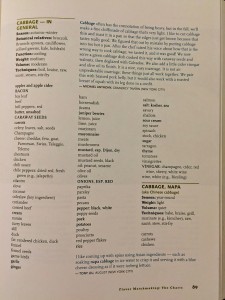Oğlumla bir donut paylaşırken yaptığımız sohbet üzerine giriştiğim araştırmayı sizlerle paylaşmak istedim. 🙂
A white substance, which includes carbon, oxygen and hydrogen in it's formation, that melts in water, is capable of fermenting, mostly sweet and extracted from stems and roots of sugar cane, sugar beet, potato, carrot, corn, and wheat is generally called "Sugar" which is a Persian word.
8000 BC - Sugar cane that grows in tropical and subtropical climates, is originally domesticated by New Guineans and than spread throughout Asia, Southern China and India.
800 BC - The first written acknowledgement of sugar cane is found in ancient Chinese tablets
500 BC - Indian farmers made carrying possible by using special bowls for shaping cold sugar syrup. English word candy, comes from khanda which is the name of this specific creation in India.
300 BC - Alexander The Great's soldiers returning from India brought sugar, which they called "honey powder", to Europe, but it took over a 1000 years for this newcomer to be accepted.
100 AD - Europe imported sugar for medicinal purposes only.
400 - Indians preferred to use honey as sweetener even though they produced ample amounts of sugar. During the Gupta Empire of the 5th century, Indian sugar cane growers, with the help of a boiling method, found a way to refine sugar to produce crystals. After the application of this new method, mainly due to easy transportation sugar became the number one tradable good in India.
5 AD - Sugar was brought to China by Buddhist monks traveling to neighboring countries and by Indian sailors to countries beyond the Indian Ocean.
600 - China planted large sugar cane fields using techniques taken from India.
9th & 10th centuries - During the Arab Agricultural Revolution, Asian & Middle Eastern muslim countries which were growing canes by way of using the Indian techniques, introduced sugar to Europe. Southern Asia, Middle East and China started using ample amounts of sugar in main courses and desserts.
11th - 13th centuries - British and French soldiers of the Crusades took this new spice they called sweet salt back home. Venetian and Mediterranean commercial fleets flourished with sugar trading, and brought back home new technologies and tools which triggered The Renaissance and The Golden Age of Inventions.
1319 - Sugar known as white gold was selling for a price of USD 110 / KG in London, and was seen as a luxury item to be consumed only by the rich.
1330 - The first recipe of a dessert very similar to Baklava was found in a cook book of the Chinese Yuan Dynasty. Baklava as we know today was created in the kitchens of Topkapı Palace in İstanbul later on.
1493 - Christopher Columbus took sugar cane plant seedlings to the Caribbean Islands during his second trip to the new world, and the suitable climate helped forming the sugar cane industry.
16th century - Europeans used the locals at first and then the African slaves as labor in Central & Southern America and the Caribbeans. Millions of slaves lost their lives due to lack of medical care, inhumane working conditions and attempted escapes.
1600 beg. - French Expert on agriculture Olivier de Serres found the process of crystalizing sugar beets.
1700 - In developed countries annual sugar consumption per person was 1 kilogram 800 grams for that time period.
1747 - Sugar beet that can be planted in temperate climates was named as the main source of sugar and pulled the prices down.
18th century - Because of the large labor force of the African slaves working for North and Middle American sugar cane plantations, sugar transformed from an expensive commodity to a popular food item.
1800 - In developed countries annual sugar consumption per person was 8 kilograms for that time period.
1801 - Because of the first European sugar beet plant created by Franz Karl Achard in Germany sugar became even more popular and reachable. Today one fifth of the world sugar production is from sugar beets.
1843 - Township of Dacice, located in today's Czech Republic, was where a manager of a sugar plant, Jakub Krystof Rad found a way to make sugar cubes, got a 5 year patent and started production.
19th century - Sugar was no more just a popular item, but it became a necessity. The booming slave market started diminishing after the American Civil war
1900 - in developed countries annual sugar consumption per person was 45 kilograms and still increasing with a fast rate.
1926 - First Turkish sugar plant was established in Kırklareli as Alpullu Şeker Fabrikası.
1957 - High fructose corn syrup, developed by Richard O.Marshall and Earl P.Kool, is being used in all sorts of food products and specially in soft and carbonated drinks.
20th century - Sugar became an ingredient used by everybody on a regular basis.
2000s - in developed countries annual sugar consumption per person was 45 kilograms We reach this high amount of 125 grams per day, with sugar consumed from food and drinks within our knowledge and plus the sugar and high fructose corn syrup consumed in all processed food without knowing.
2015 – British authorities say our daily sugar consumption should not exceed 25 grams (95 kcal), where the American authorities think 50 grams (190 kcal) is acceptable. In other words what they say is that our daily sugar consumption should stay in a range of 5-10% of our total daily usage of calories.
I try to minimize the usage of processed goods as much as I can in my kitchen, in order to keep our daily sugar consumption within acceptable limits.
tags
sugar















